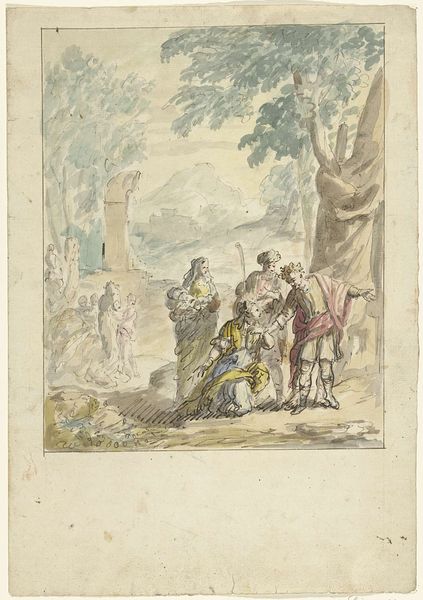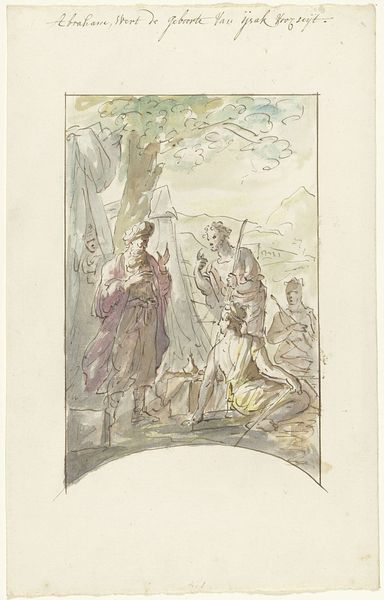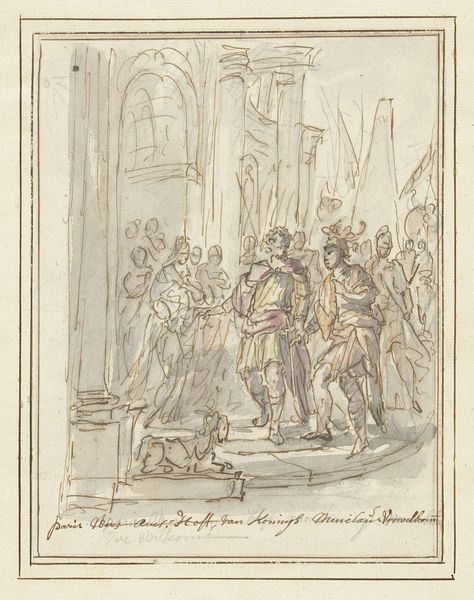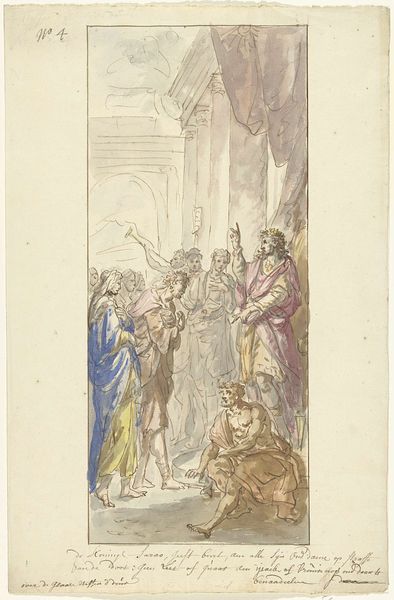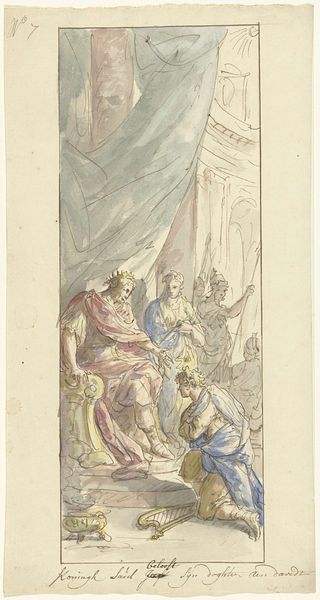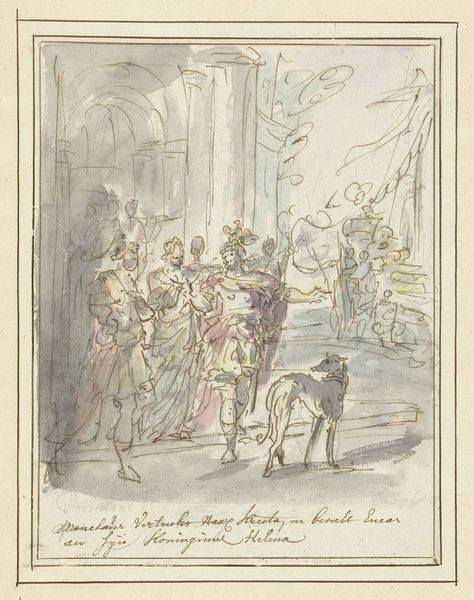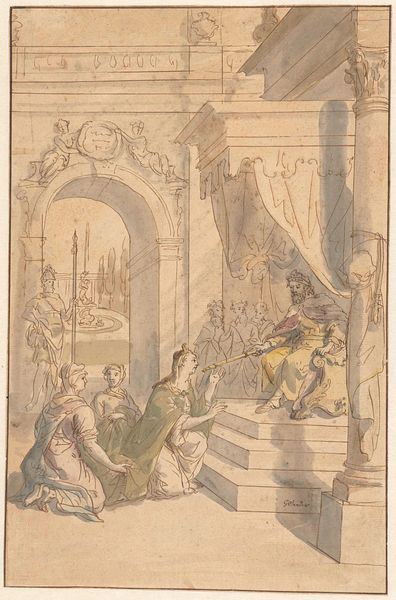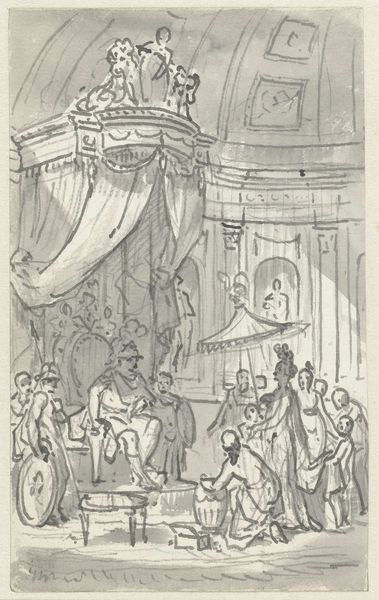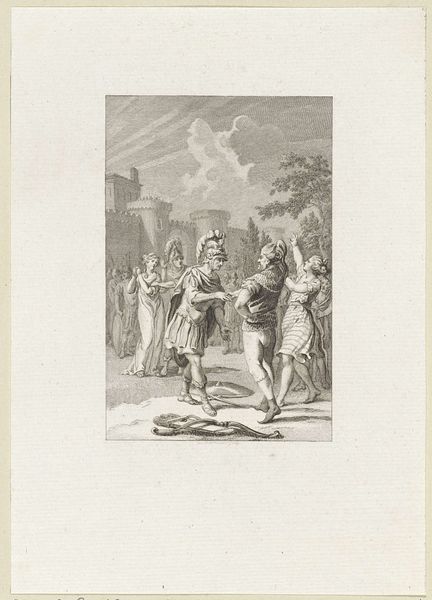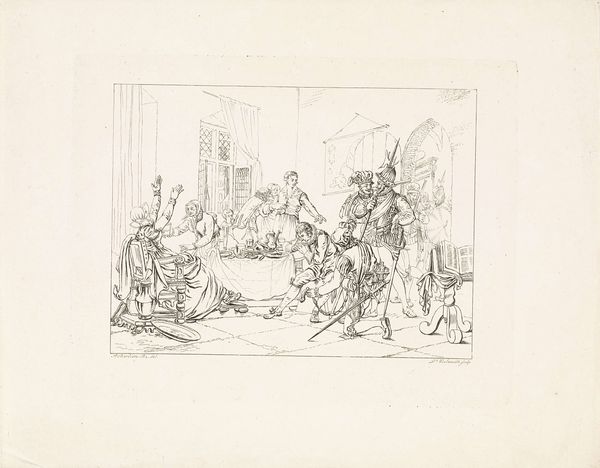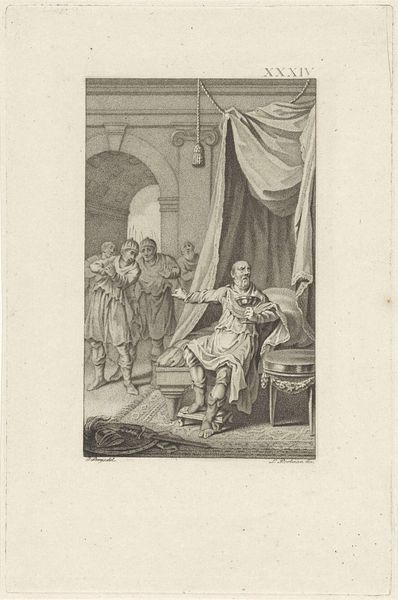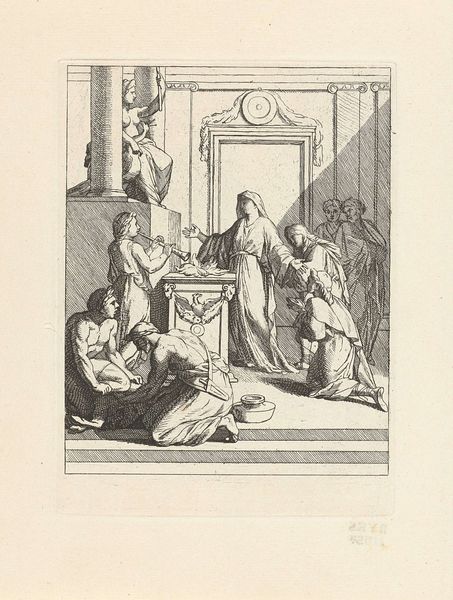
drawing, watercolor, ink
#
drawing
#
baroque
#
figuration
#
watercolor
#
ink
#
history-painting
Dimensions: height 330 mm, width 208 mm
Copyright: Rijks Museum: Open Domain
Curator: Here we have a drawing by Elias van Nijmegen, dating from somewhere between 1677 and 1755, titled “Masinissa reikt Sophonisbe de gifbeker,” or "Masinissa offers Sophonisba the poison cup." It's executed in ink and watercolor. Editor: Gosh, that’s… bleak. I get a heavy feeling just looking at it. It’s that pallid palette, maybe, like watching something drain of life, combined with these frantic, scratchy lines… There's such tension. Curator: Indeed. Van Nijmegen's choice of subject plunges us right into the fraught politics of ancient Numidia. Sophonisba, a noblewoman, found herself caught between warring factions. To avoid falling into Roman hands, she accepted poison from her husband, Masinissa, as a means of taking control of her destiny, as horrific as it seems. Editor: It's like a stage play, isn’t it? All these peripheral figures sort of watching with bated breath, except… distant somehow. Removed from the horror that is playing out right in front of them. Do you think they knew she was drinking poison? Curator: I would say their gestures hint that they did. The historical context suggests that it wasn't simply a private affair, but rather a public spectacle that reflected upon both Masinissa's loyalty and Sophonisba's resolve, not to mention the brutal realities of Roman expansion. I think that van Nijmegen perfectly encapsulates that feeling with his design. Editor: Wow. To think she chose death over… what? Humiliation? Slavery? It's empowering and awful all at once. Curator: Exactly. We're looking at agency and power, yes, but only within extremely circumscribed, patriarchal conditions. Her choice can also be seen as the ultimate protest. She denied the Romans their victory by choosing her own end. It highlights how female bodies often became politicized symbols of territory and conquest. Editor: The artist doesn’t give us her expression—we don’t know how she felt when drinking. The focus is more on everyone else than on her. Curator: Van Nijmegen doesn't let us off the hook easily. The fact that her reaction is masked forces us to consider the broader, more systemic reasons for her despair. Editor: Looking at it now, with your insights, it is so much more than just an old drawing—I’m sitting with layers and layers of implications. Thank you for unraveling it for me. Curator: And thank you for bringing your insightful gaze to it. These stories from the past continue to speak to us in complex, necessary ways.
Comments
No comments
Be the first to comment and join the conversation on the ultimate creative platform.
